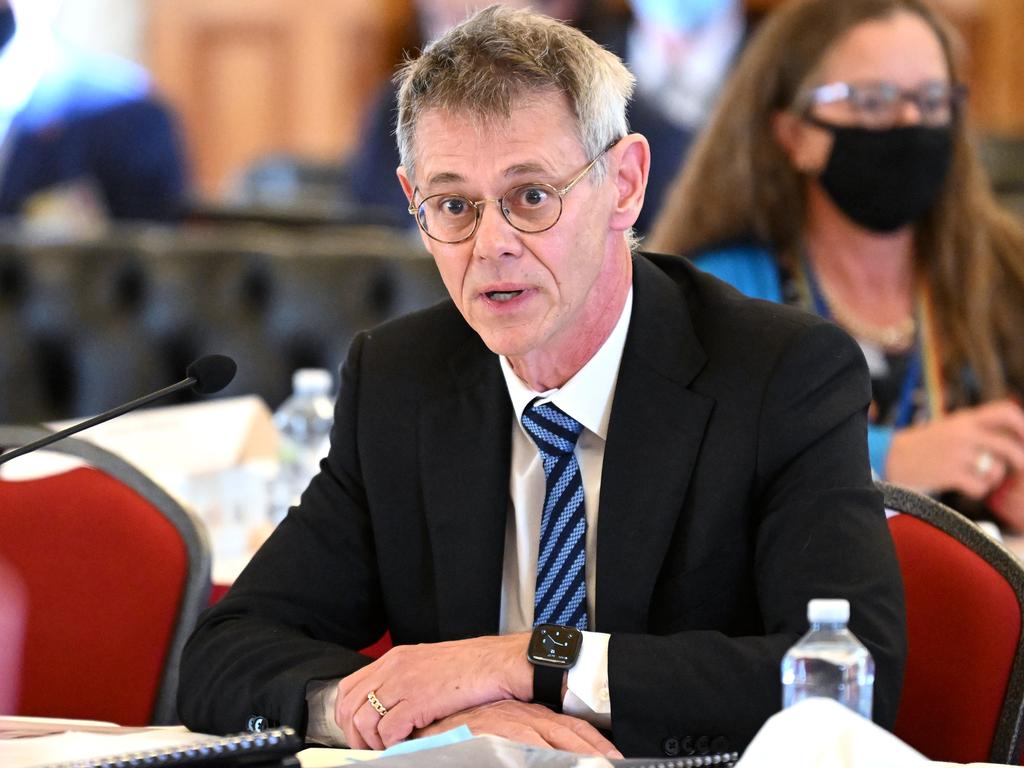Wayne Swan-backed sandmine could cause ‘long term’ damage to endangered Cape York rainforest
A sandmining project chaired by ALP president Wayne Swan will likely cause ‘long term and serious’ damage to threatened rainforest on pristine Cape York, an environmental expert has warned.

A sandmining project chaired by ALP president and former treasurer Wayne Swan will likely cause “long term and serious” environmental damage to threatened rainforest on pristine Cape York, an environmental expert has warned.
ASX-listed Diatreme Resources, which wants to dig two silica sand mines to fuel China’s increasing demand for solar panel construction, has insisted its projects will have only a “temporary” impact on littoral rainforest near the Aboriginal community of Hope Vale, on the far north Queensland peninsula.
But expert Bruce Wannan – who has 30 years of experience in vegetation ecology on Cape York including mining rehabilitation, and was the principal project officer for Queensland’s Department of Environment and Resource Management Cape York Peninsula branch – has warned that the true impact would be “long term and serious” because it was “extremely difficult” to rehabilitate the “critically endangered plant community”.
Dr Wannan was commissioned by the Queensland Conservation Council and Pew Charitable Trust to deliver the until-now unpublished report, in which he airs concerns about the mining project’s environmental risks, including the negative impact of increased shipping through the Great Barrier Reef, destruction of “nationally important” wetlands, and the potential endangerment of two endemic skink species.
Diatreme is in a joint venture with global sandminer Sibelco, after the international corporation’s silica mine on Stradbroke Island was shut down by Queensland’s Labor government in late 2019. An investigation by The Weekend Australian in 2022 revealed the extent of Aboriginal native title holders’ concerns about the project, despite Diatreme insisting it had the full support of traditional owners, and the extent of the involvement of Labor-linked lobbyists in pushing the company’s interests.

Diatreme chief executive Neil McIntyre told a recent mining conference in Noosa that the company’s merger with Metallica Minerals would mean its tenements would “completely surround” and eclipse the operations of the world’s biggest silica mine, the Mitsubishi-owned Cape Flattery, which has operated on Cape York since 1967.
“It’s over 500 square kilometres, it’s a dune field from the bottom to the top,” he told prospective investors.
“This is truly going to be a long-life mine. We completely surround the operations of Cape Flattery Silica Mine, (which has) been operating over 40 years, the world’s largest silica mine, (which is) currently exporting around three million tonnes per year. We completely surround them. And now with our acquisition of Metallica we surround them even more. We have them on all sides.”
Diatreme’s $535m Northern Silica Project is forecast to start exporting three million tonnes of silica per year from 2026-27 – provided it gets all of its state and federal government approvals – but plans to ramp up to five million tonnes per year within a few years, for the 25-year life of the mine.
Mr McIntyre told investors the company was still in negotiations with state government-owned port authorities to use the existing Cape Flattery wharf to export the silica, using a barge to transfer the material to an ocean-going vessel.

He said a new barge ramp and wharf extension – north of the existing infrastructure – was in the current proposal but might not be needed, if the port-sharing deal was inked.
Mr McIntyre told the conference the company was focused on “minimising environmental impact where possible” and planned a progressive rehabilitation of vegetation habitats post-mining.
“This is as clean and green as mining can get, really,” he said.
But Dr Wannan – in the report obtained by The Weekend Australian – said his three-decade-long experience with Cape York vegetation suggested “reinstatement” of the threatened littoral rainforest was extremely difficult, because they often depend on the groundwater which was “always disrupted by mining activities”.
Dr Wannan’s critique of a key document relied on by Diatreme – consultant BMT’s co-ordinated project application initial advice statement – states that it largely avoids considering the impact on the Cape Flattery Dune Lakes wetland. “There seems little doubt that the alienation or destruction of up to 4800ha from this wetland would have a major impact … it is not just the lakes but the entire mosaic of habitat together which defines the extraordinary values of this area.”
Traditional owner Deleece Bowen, chair of the Dhaarrba land trust, said she and her father, senior elder Richard Bowen, shared Dr Wannan’s concerns about the clearing of the endangered littoral rainforest.
“Rehabilitation of vegetation occurs after clearing on most sites but our fears are it will never be the same,” Ms Bowen said. “Cultural heritage sites will be destroyed.
“This is what connects us to our land, our history. Mining will have an effect on our ecosystems and this could disrupt ongoing connections between our culture and nature due to land clearing, pollution of our waterways, loss of cultural and spiritual connections, connections to our story places.”

In response to Dr Wannan’s concerns, Mr McIntyre told The Weekend Australian in a written statement that while the company welcomed his feedback, Dr Wannan had made “several factually inaccurate statements about the proposed project”. He declined to say what they were.
Mr McIntyre said the initial advice statement had been examined by qualified scientists from the federal and state governments and their feedback had informed the drafting of the terms of reference for the environmental impact statement (EIS).
“We assure all involved that Diatreme will not be breaking ground until the EIS process is completed appropriately,” he said.
Mr McIntyre told investors the company expected to submit the final EIS in the middle of next year and receive a decision from the state government after that. By 2026, he said, the company was expecting Environment Protection and Biodiversity Conservation Act approval, the sign-off on mining leases, and other state and federal approvals to start construction. He said it was too early to draw from “just one participant’s feedback at this early stage”.
Queensland Co-ordinator-General Gerard Coggan said he was considering all comments received from the community and other stakeholders before finalising the terms of reference the company will use to prepare a draft EIS.






To join the conversation, please log in. Don't have an account? Register
Join the conversation, you are commenting as Logout